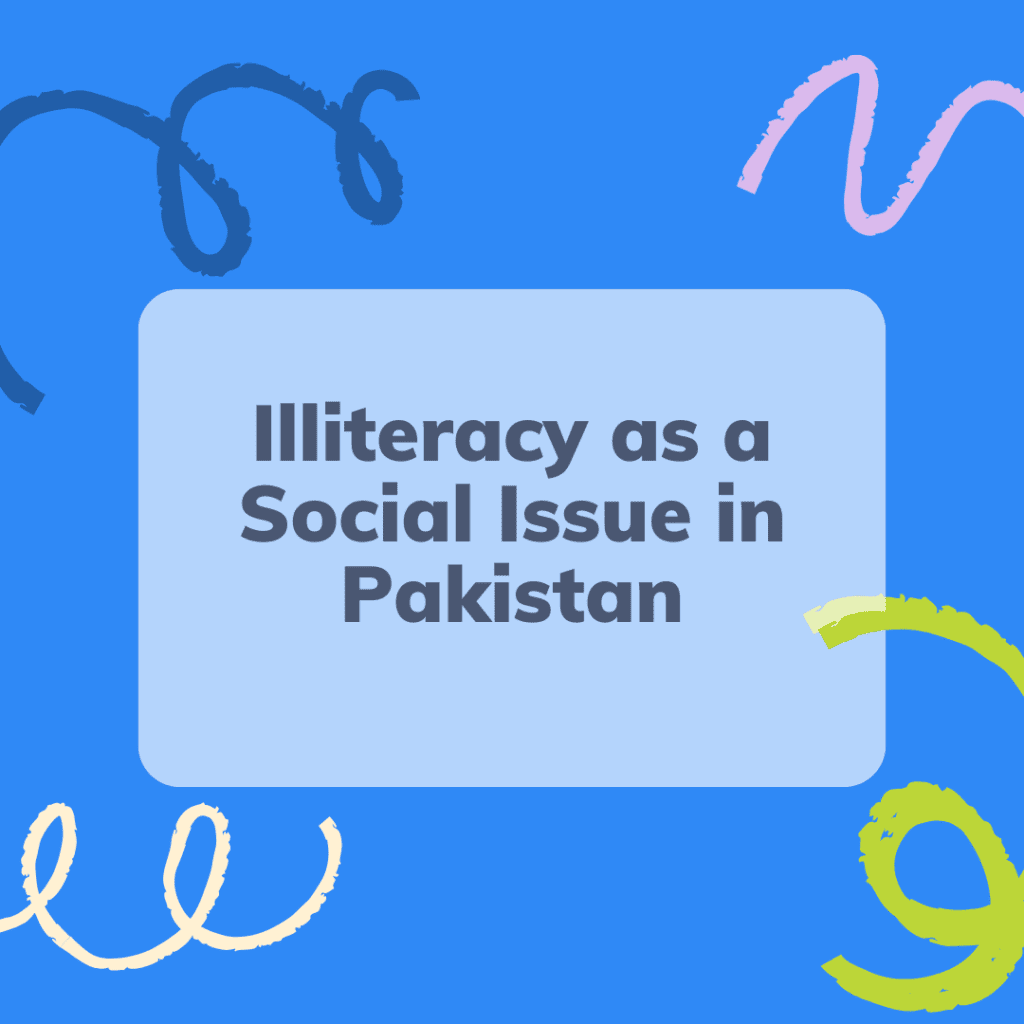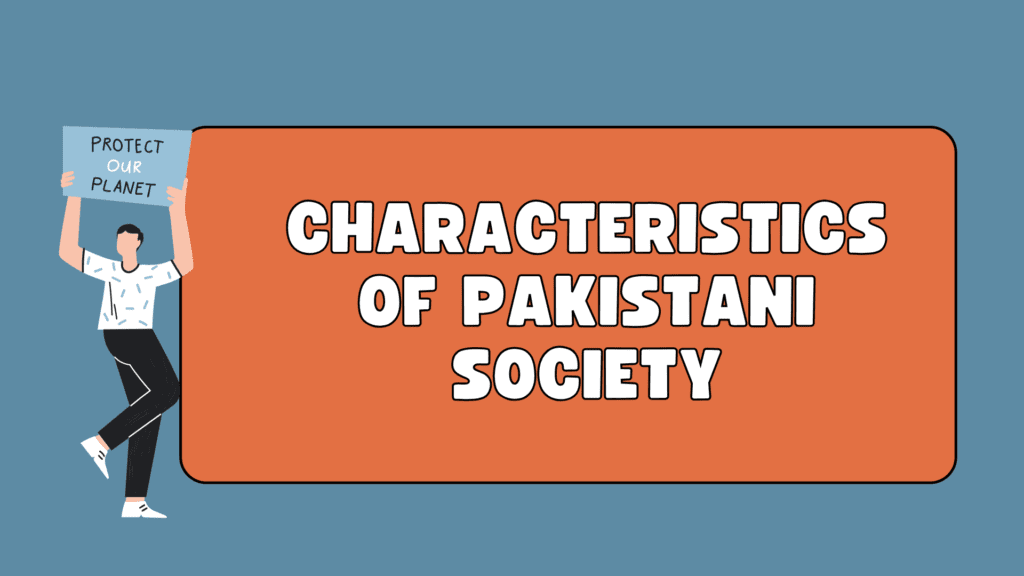Illiteracy is a significant social issue that affects the economic, social, and cultural development of a nation. In Pakistan, illiteracy remains a persistent challenge, hindering the country’s progress and exacerbating social inequalities. Illiteracy refers to the inability to read, write, or understand basic concepts of literacy, including numeracy, which limits an individual’s opportunities in life. This issue is multifaceted, with historical, socio-economic, cultural, and political factors contributing to its persistence.
Scope and Statistics of Illiteracy in Pakistan
Pakistan has one of the highest illiteracy rates in South Asia. According to the United Nations Educational, Scientific and Cultural Organization (UNESCO) and Pakistan’s Economic Survey, the literacy rate in Pakistan is approximately 60% (with significant differences between male and female literacy rates).
-
Urban vs. Rural Divide: Urban areas like Lahore, Karachi, and Islamabad have higher literacy rates compared to rural regions, where educational infrastructure is often lacking.
-
Gender Disparity: There is a stark gender gap in literacy rates. Women, particularly in rural areas, face more barriers to education due to cultural norms, economic constraints, and security issues.
Causes of Illiteracy in Pakistan
The causes of illiteracy in Pakistan are varied and complex. They include:
-
Economic Constraints: Poverty is a major barrier to education. Families in lower-income households cannot afford school fees, uniforms, or transportation costs. Children from such families are often forced to work instead of attending school.
📌 Example: In rural areas, many children, especially girls, are kept at home to help with household chores or work in the fields, depriving them of educational opportunities.
-
Cultural and Social Norms: In certain regions, cultural attitudes favor educating boys over girls. Early marriages, especially for girls, also result in dropping out of school.
📌 Example: In conservative areas of Khyber Pakhtunkhwa or Balochistan, girls’ education is often seen as unnecessary, leading to higher illiteracy rates among women.
-
Poor Infrastructure: Lack of schools, especially in rural and remote areas, contributes to illiteracy. Even when schools exist, many are underfunded, poorly equipped, and lack trained teachers.
📌 Example: A child in rural Sindh may have to travel miles to reach the nearest school, and even then, the school may have overcrowded classrooms and inadequate teaching materials.
-
Political Instability: Political instability, particularly in regions like Balochistan and parts of KPK, disrupts the education system. Conflict and insecurity discourage parents from sending children to school.
-
Lack of Government Focus: Although there are policies aimed at improving literacy, implementation is weak. Budget allocations for education are often insufficient, and there is a lack of proper monitoring and accountability in the education sector.
Consequences of Illiteracy
The consequences of illiteracy are far-reaching and affect multiple facets of Pakistani society:
-
Economic Underdevelopment: Illiteracy limits the skill set of the workforce, preventing individuals from obtaining better-paying jobs and contributing to the overall economic growth of the country.
📌 Example: A person without basic literacy skills is less likely to participate in skilled labor or formal employment, leading to a cycle of poverty.
-
Social Inequality: Illiteracy exacerbates social inequalities, particularly gender disparities. Illiterate women have fewer opportunities for employment and are more likely to remain dependent on male relatives.
📌 Example: Illiterate women in rural areas often have limited access to health information, which affects their decision-making regarding family planning and health.
-
Political Disenfranchisement: Illiterate citizens are less likely to engage in political processes such as voting, leading to low political participation and weak democratic engagement.
📌 Example: Illiterate voters may be easily influenced by local elites, political parties, or religious figures, weakening the democratic process.
-
Health and Well-being: Illiteracy is linked to poor health outcomes, as individuals who are unable to read health information or follow medical instructions may face higher rates of illness and mortality.
📌 Example: Illiterate individuals may struggle to understand prescriptions, nutritional information, or sanitation guidelines, leading to higher incidences of preventable diseases.
Government and NGO Efforts to Combat Illiteracy
Over the years, both the Pakistani government and various non-governmental organizations (NGOs) have made efforts to address illiteracy. Some key initiatives include:
-
Education Reforms: The National Education Policy (2017) aims to increase literacy rates by introducing reforms such as free and compulsory education for children up to age 16 and improving access to educational resources.
-
Ehsaas Program: The government’s Ehsaas Program provides financial aid and scholarships to impoverished families to help them send their children to school, aiming to reduce economic barriers to education.
-
Adult Literacy Programs: Various adult literacy programs, both government-sponsored and run by NGOs, focus on providing education to adults who missed out on schooling during their youth.
📌 Example: The National Commission for Human Development (NCHD) works in rural areas to provide adult literacy programs aimed at enhancing the skills of non-literate individuals.
-
NGO and International Assistance: Organizations like The Citizens Foundation and Agha Khan Foundation provide community schools, scholarships, and vocational training programs aimed at combating illiteracy in marginalized communities.
Addressing the Illiteracy Issue: Suggested Solutions
To combat illiteracy effectively, Pakistan must adopt a multifaceted approach:
-
Strengthening the Education System: The government should prioritize increasing education funding, improving teacher training, and expanding school infrastructure, particularly in rural and underserved areas.
-
Promoting Gender Equality: Creating more opportunities for girls’ education by addressing social, cultural, and economic barriers will be crucial in reducing illiteracy among women.
-
Public Awareness Campaigns: Initiatives to raise awareness about the importance of education for all children, regardless of gender or class, can shift cultural attitudes and promote literacy.
-
Leveraging Technology: The use of technology, such as online courses and mobile learning apps, can offer alternative means of education, especially in remote areas with limited access to schools.
Conclusion
Illiteracy in Pakistan remains one of the most pressing social challenges, affecting individuals, families, and society at large. It perpetuates cycles of poverty, limits economic opportunities, and hinders social development. By addressing the root causes of illiteracy and investing in education, Pakistan can unlock its potential for growth and create a more equitable society for all its citizens.


